7.30am
sunrise over Fitzgerald Bay, Spencer Gulf and Southern Flinders Ranges. On
Saturday night daylight saving finishes so will be back to 6.30am sunrises which
I probably won’t get up for!! 19 degrees in the van with it all closed up.
Obviously the tide came in during the night and filled up the low areas.
Headed
off north running along the edge of the Gulf to check out the other camp areas.
Someone
had told us of their favourite spot they called ‘Check Point Charlie’. The end
of the road where the Army Training Area meets the water.
Leanne
rang to tell us about the underground house at Cooper Pedy – amazing. Drove
back to Douglas Point and up to the lookout for a cuppa. Looking over the Army
area then around over the Gulf and then down to the south and back over the
Army area again.
Zoomed
in on Port Pirie on the other side of the Gulf.
High
pressure gas pipeline is buried here and goes under the water.
Next
to it is a concrete structure which we think is for power cables.
Back
down the road to another camp area called Backy Point.
Oops
someone didn’t make it.
Up
the hill to look over Fitzgerald Bay – beautiful.
Our
van is on the other edge of the bay.
Continued
around the bay then back out to the turnoff. Heading south we passed Port
Bonython which opened in 1984 and employs about 80 people. Its name comes from
John Bonython who initiated the search for oil and gas in the Cooper Basin and
founded Santos Ltd. Liquid hydrocarbons (oil, condensate and LPG, mixed at
Moomba) from the Cooper/Eromanga Basins in the NE corner of SA and SW corner of
Qld are pumped through a 659km underground pipeline to be processed here. The
liquids are separated at the Fractionation Plant creating crude oil, napthas,
propane and butane (LPG) and are held in storage tanks with capacities of
250,000 barrels, before being pumped along a 2.4km jetty to waiting tankers of
up to 110,000 tonnes deadweight capacity.
Walked
down to the beach area where a few holiday houses are.
Continued
down the road to Point Lowly. Nice camp areas here for $6/night. This guy has
the best one.
Right
beside the protected boat ramp.
Found
some of the Freycinet Trail info boards.
As
I was reading the last one Skippy came bounding towards me.
Down
to the Point Lowly Lighthouse with its little kerosene storeroom.
The
two lighthouse keepers’ cottages are available to rent for $25/n/adult. They
still use the ‘dunny down the back’. The cottages and the lighthouse are the
oldest buildings in the Whyalla area.
More
info on the Freycinet Trail – we have missed a few!!
Info
about Port Bonython – I remember hearing about the oil spill on the news.
Continued
down the track to the lighthouse – this shed is where the backup generator was
kept when it converted to electricity.
You
can see the different surface where the lighthouse was raised.
Anyone
home?
Looking
up then across the Spencer Gulf.
An
unusual spider’s web.
Headed
back up the road around False Bay to Whyalla. This area is breeding area for
cuttlefish and has a salt works. The cuttlefish migrate to these waters each
year to spawn during May and August. Interesting note – cuttlefish are colour
blind. They have ‘W’-shaped pupils which are thought to allow them to see both
behind and in front at the same time. They are not actually a fish. They are a
cephalopod and their feet or tentacles actually connect to their head rather
than their body. They have blue blood, three hearts, eight arms and two feeding
tentacles. I remember a Trivia question ‘what animal has three hearts’ – now I
know.
Heading
into Whyalla where there were miles of train wagons.
Passed
some of the OneSteel works then the sleeper plant.
Stopped
at the Info Centre where the ‘Whyalla’ is on display. It was built in Wyalla.
A
bit of history at the centre and more from the booklet. The northern Spencer
Gulf was first navigated by Matthew Flinders in 1802, followed by Frenchman
Louise-Claude de Freycinet in 1803. In 1840, explorer Edward John Eyre reported
the presence of iron stone in the Middleback Ranges, 50km west of Whyalla. The
first attempts to mine the area began in the 1890s. The city itself started as
a tiny work camp on the shore at the foot of Hummock Hill in 1901. The camp was
set up as a service base for the iron ore jetty constructed by Broken Hill
Proprietary Company Limited (BHP). The settlement, then known as ‘Hummock
Hill’, gradually expanded until 1914 when Whyalla was proclaimed a town. BHP Co
Ltd extended its industrial activities in Whyalla by building shipyards and a
blast furnace in 1940. The booming town was proclaimed a city in 1961. The
steelworks started production in 1965. After construction of 66 ships, the
Whyalla shipyards closed in 1978. On October 28, 2000, the steelworks became an
independent company; OneSteel Whyalla Steelworks, in 2012 the company name was
changed to Arrium Ltd.
We
had missed the tour for today and they don’t go again til Friday. Drove up to
the lookout on Hammock Hill. Good view over the steel works as we ate our lunch.
Looking
across the bay to Port Bonython.
An
old trailway sign about the big water tank. Water was scarce in 1939 they put
in this tank. The town was divided into three areas and water was only turned
on twice a week for each section and none on Sundays!!
Looks
like they are working again after lunch.
Further
up the hill to the old gun emplacements. Only one gun on display the other
areas have been turned into picnic spots.
Great
view also over the marina and foreshore area then around over the city.
Looking
out into Spencer Gulf where the big ship waits for its cargo being dragged out
on barges by the tugboats.
Iron
Ore.
History
of Whyalla and the turning on of the Morgan to Whyalla water pipeline from the
River Murray.
Headed
down the hill to the marina - nice cars.
Looking
back up to the gun emplacements on Hammock Hill.
On
the way to the Brake place we passed a very formal High School which has a
fantastic view and the sports ground beside the water.
The
chap at the Brake place will make up some brake lines for Steve so we have
spares. Headed up the hill to check out the Flinders and Freycinet Lookout. The
tugs are still going back and forward.
Outside
the Vets was The Loaded Dog sculpture which was created by world-famous
sculptor Andy Scott, entirely out of steel, using a unique construction
technique of welding thousands of pieces of 10mm and 12mm rod together.
Designed and constructed in Glasgow, it was unveiled to the public in 2008. The
Loaded Dog was from Henry Lawson’s short story.
Drove
around to visit Wendy Blue’s mum, Rhonda and check out all her dolls. Truly
amazing collection. This is just a small bit of it.
I
have never seen this type of doll before – it has three faces on the head so
you can have a happy, sad and sleeping doll.
The
Smurf collection.
She
also had a collection of Enid Blyton’s Secret Seven and Famous Five books – my
favourites when I was in primary school.
Headed
back to camp. Stopped at the top to read the plaque about aquaculture but it
was missing.
A
few more campers have set up along the foreshore. The weather forecaster said
it only got to 21 degrees today – I agree.





































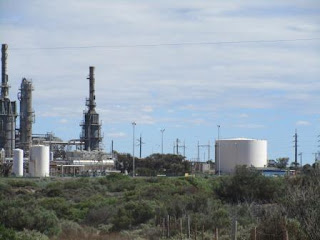

























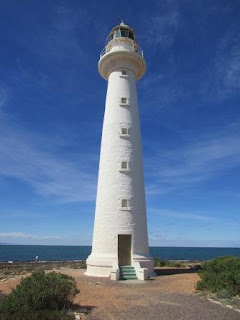



































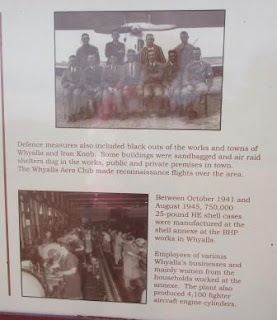

















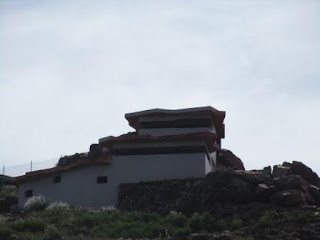











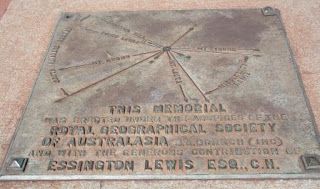















No comments:
Post a Comment